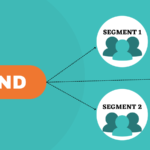Creating enticing content for emails is both an art form and a strategic operation. It demands a fusion of creativity, precision, and a deep understanding of your audience’s needs. In a world where inboxes are constantly bombarded, standing out is crucial.
This guide provides actionable insights on formulating captivating email messages. We delve into the essence of understanding your audience, crafting personalized content, and optimizing your emails for better engagement. Our focus keyword, ‘analyzing,’ plays a pivotal role in understanding the dynamics at play.
Analyzing Your Audience
Before you begin typing, take a moment to analyze your target demographic. Understanding their problems, desires, and behaviors is crucial. This data shapes the content, tone, and format of your messaging.
Analyzing email metrics can offer insights into what resonates with your audience. Look at open rates, click-through rates, and engagement over time to adjust your strategies accordingly.
Segmentation is another powerful outcome of audience analysis. Cater your content to different segments based on their preferences and behaviors for more personalized communication.
Remember, the goal is to make each reader feel like you’re speaking directly to them. Addressing their specific needs and interests can significantly boost engagement levels.
Writing Compelling Subject Lines
Subject lines are your first impression. A well-crafted subject line should pique curiosity, evoke emotion, or offer value, compelling the recipient to open your email.
Be concise yet descriptive. Aim for 50 characters or less to ensure your subject line is not cut off on mobile devices.
Analyzing past subject lines can uncover what triggers your audience’s interest. Use this to experiment and refine your approach over time.
Crafting Content That Resonates
Within the body of your email, every word counts. Start with a clear and engaging opening line that hooks the reader right away.
Break your content into digestible sections using subheadings and bullet points. This improves readability and allows receivers to quickly scan your email.
Storytelling can significantly enhance your content’s appeal. Shared experiences or relatable scenarios can make your brand more personable.
Emphasize benefits rather than features. Readers are more interested in how your offering can improve their lives or solve their problems.
Include a clear call-to-action (CTA) to guide recipients on what to do next. Whether it’s visiting a website, signing up for a webinar, or making a purchase, your CTA should be simple and straightforward.
Personalizing Your Emails
Personalization goes beyond just inserting the recipient’s name. Analyze behavioral data to tailor content, offers, and recommendations that align with individual preferences.
Dynamic content blocks can be used to customize emails based on user data. This can range from location-specific information to items left in a shopping cart.
Personalized emails often result in higher engagement rates. They signify that you understand and value your recipient’s unique needs and preferences.
Optimizing for Engagement
To ensure your emails are effective, testing and analyzing different elements is key. A/B testing subject lines, calls-to-action, and content formats can reveal what generates the most engagement.
Email design also plays a crucial role in engagement. Ensure your emails are visually appealing and easy to navigate. Responsive design is a must to accommodate readers across different devices.
Engagement doesn’t end at the email. Analyzing how recipients interact with your emails can provide insights for future optimizations. Monitor metrics like click-to-open rates and conversion rates to gauge the effectiveness of your strategies.
Conclusion
In the realm of email marketing, the content of your messages can make or break your campaign’s success. By analyzing your audience, writing compelling subject lines, crafting resonant body content, personalizing your approach, and continuously optimizing for engagement, you can significantly increase the impact of your email communications. Remember, the key is to create value for your recipients, making every email they receive from you worth their time.


